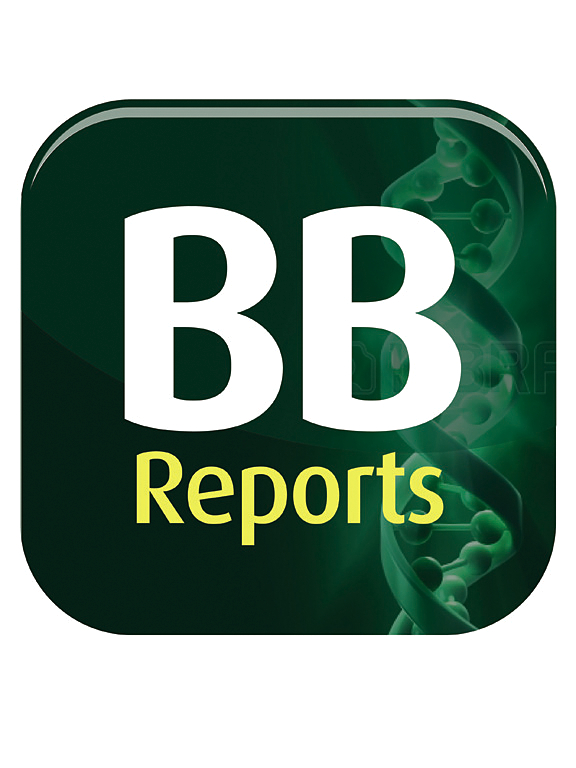Multidirectional therapeutic effects of synthesized HMGB1 peptide on liver cirrhosis in mice
IF 2.2
Q3 BIOCHEMISTRY & MOLECULAR BIOLOGY
引用次数: 0
Abstract
Aim
Liver cirrhosis is a serious disease characterized by liver dysfunction and severe fibrosis; however, no breakthrough drugs have effectively improved fibrosis, making it an unmet medical need. We have previously reported that the HMGB1 peptide, synthesized from box A of the HMGB1 protein, ameliorates liver fibrosis and is a promising candidate for fibrosis-improving drugs against liver cirrhosis. In this study, we used spatial analysis to observe treatment-induced changes over time.
Methods
Liver cirrhosis was induced in C57BL/6J mice using carbon tetrachloride (CCl4) injections, followed by HMGB1 peptide treatment. To assess the temporal effects of HMGB1 on the liver in a CCl4-induced cirrhosis mouse model, we used GeoMx spatial analysis. We focused on αSMA-positive active hepatic stellate cells (HSCs), F4/80-positive macrophages, and CK8/18-positive hepatocytes to determine how each cell type was affected over time. Statistical analyses were conducted using GraphPad Prism9, with significance set at p < 0.05.
Results
In cirrhotic mice, we first observed a decrease in the number of activated HSCs over time, two weeks after treatment initiation. Macrophage-associated genes ceased to induce fibrosis-related pathways early in the treatment. This suggests that the effect of macrophages on fibrosis was weakened by the treatment. We also confirmed that lipid metabolism of hepatocytes may be improved during treatment. Furthermore, Cxcl12 and Ccl25 expression were induced in the peptide-treated group, indicating possible cell migration to the liver.
Conclusion
Over time, macrophages followed by HSCs, showed the most notable changes with treatment, resulting in improved fibrosis. The HMGB1 peptide drug also affected lipid metabolism in hepatocytes, suggesting a positive therapeutic effect on steatohepatitis. Elevated factors that promote cell migration may have also enhanced the healing effect.
合成HMGB1肽对小鼠肝硬化的多向治疗作用
肝硬化是一种以肝功能障碍和严重纤维化为特征的严重疾病;然而,目前还没有突破性的药物能够有效地改善纤维化,这使得它成为一个未被满足的医疗需求。我们之前报道过,由HMGB1蛋白框A合成的HMGB1肽可改善肝纤维化,是抗肝硬化的纤维化改善药物的有希望的候选药物。在这项研究中,我们使用空间分析来观察治疗引起的随时间变化。方法采用四氯化碳(CCl4)注射诱导C57BL/6J小鼠银质肝硬化,然后采用HMGB1肽治疗。为了评估HMGB1对ccl4诱导的肝硬化小鼠模型肝脏的时间效应,我们使用了GeoMx空间分析。我们重点研究α sma阳性的活性肝星状细胞(hsc)、f4 /80阳性的巨噬细胞和ck8 /18阳性的肝细胞,以确定每种细胞类型随时间的影响。采用GraphPad Prism9进行统计学分析,显著性设为p <;0.05.结果在肝硬化小鼠中,我们首先观察到随着时间的推移,在治疗开始两周后,活化的hsc数量减少。巨噬细胞相关基因在治疗早期停止诱导纤维化相关通路。这表明巨噬细胞对纤维化的作用被治疗削弱了。我们也证实肝细胞的脂质代谢可能在治疗期间得到改善。此外,在肽处理组中诱导了Cxcl12和Ccl25的表达,表明细胞可能向肝脏迁移。结论随着时间的推移,巨噬细胞的变化最为显著,其次是造血干细胞,导致纤维化的改善。HMGB1肽药物还能影响肝细胞的脂质代谢,提示对脂肪性肝炎有积极的治疗作用。促进细胞迁移的升高因子可能也增强了愈合效果。
本文章由计算机程序翻译,如有差异,请以英文原文为准。
求助全文
约1分钟内获得全文
求助全文
来源期刊

Biochemistry and Biophysics Reports
Biochemistry, Genetics and Molecular Biology-Biophysics
CiteScore
4.60
自引率
0.00%
发文量
191
审稿时长
59 days
期刊介绍:
Open access, online only, peer-reviewed international journal in the Life Sciences, established in 2014 Biochemistry and Biophysics Reports (BB Reports) publishes original research in all aspects of Biochemistry, Biophysics and related areas like Molecular and Cell Biology. BB Reports welcomes solid though more preliminary, descriptive and small scale results if they have the potential to stimulate and/or contribute to future research, leading to new insights or hypothesis. Primary criteria for acceptance is that the work is original, scientifically and technically sound and provides valuable knowledge to life sciences research. We strongly believe all results deserve to be published and documented for the advancement of science. BB Reports specifically appreciates receiving reports on: Negative results, Replication studies, Reanalysis of previous datasets.
 求助内容:
求助内容: 应助结果提醒方式:
应助结果提醒方式:


